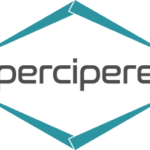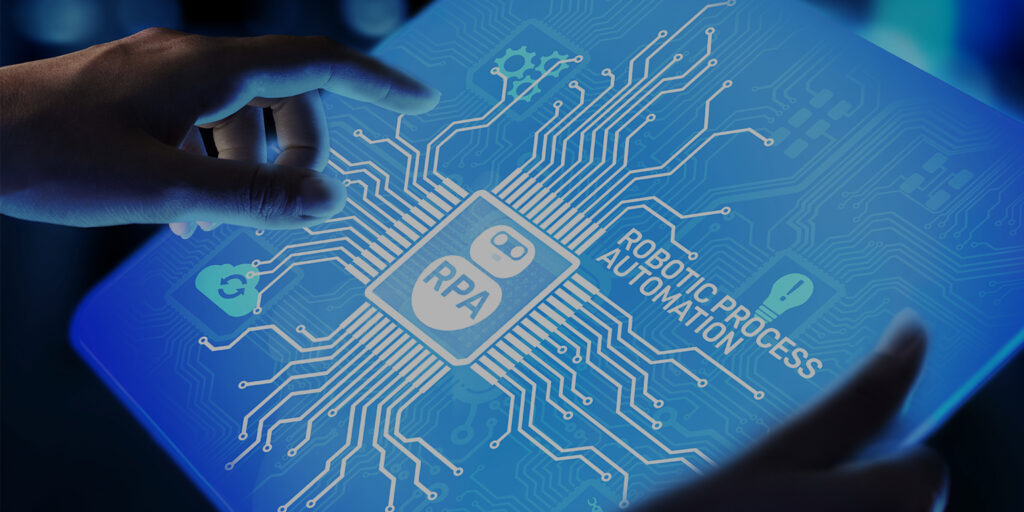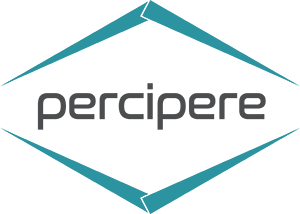Apparently, the hyphenation of Robotic Process Automation and Human Resource Management appears much of a paradox and a topic ripe for a hot debate. However, their paths were bound to cross in the knowledge-driven economy characterized by the inherent need to do more with less and manage workforces with agility. In its State of the Global Workplace report, Gallup observed that 87% of the employees worldwide are increasingly detached from their roles, costing businesses a whopping $7 trillion in lost productivity. It indicates systemic issues, posing rather serious implications.
Nevertheless, while the HR cadre is responsible for fostering employee engagement, its members are often buried under an avalanche of repetitive chores that add little to no value in finding and retaining the best talents in the organization. What if we can automate this toil and let people managers focus on what they do best: find creative ways to promote greater workforce cohesion and employee loyalty.
What are some common industry pain points?
For years, the HR departments of the organizations were considered to be better off siloed from other business functions and acting in isolation as a watchdog of the people management policies. However, in the New Economy, as the business operations become more complex and their success integrally linked with the quality of human capital, the HR managers had to leave their perch and come down to play a more active role in bridging employee interests and institutional goals. Consequently, modern HR professionals are locked in an intense balancing act of simultaneously handling conventional responsibilities with the evolving human capital demands, leading to an incredible rise in work pressure. This study found that 86% of the HR executives consider their stress to have increased recently, with 53% reporting to be potentially burned out. Further, the 2021 State of People Strategy Report records 67% of professionals citing a sharp hike in workloads leading to team exhaustion, and at least 40% are struggling to cope with an overwhelming number of projects and responsibilities.
The predicament is real! HR professionals today are expected to be at the helm of objectives that are diverse, critical, and have far-reaching impacts. For instance, keeping up with the rapidly shifting labor law landscape, failing which may entail significant compliance and reputational fallouts. At the heels of such shifts is the need for prudent change management to avoid the erosion of employee morale and productivity. Further, managing attrition and retaining highly skilled employees is pivotal for the success of knowledge-driven businesses like professional services and manufacturing in an extremely fluid market. In the wake of the Great Resignation, 95% of the workers are considering a switch to look for the right role, even in a different industry.
Amidst this, the HR policies need to be geared to maintain an optimal mix of experience and enthusiasm to ensure an agile workforce that is highly trained, empowered, and satisfied. LinkedIn, through this research, revealed that 93% of the employees are likely to stick with a company that is observably invested in their career and growth. But, this further burdens the HR professionals with a series of commitments that includes the orchestration of the workforce training and development schedules. Additionally, such efforts also include helping employees to embrace innovation and promoting the use of new technologies, managing employee compensation and benefits policies in ways that are competitive yet profitable, and ensuring timely and error-free payroll processing. However, this means that in companies that continue to do things manually, the people managers will have to juggle, often precariously, with mission-critical functions and be hard-pressed in meeting modern HR operational standards.
Why is RPA important?
In respite, the HR managers across industries are embracing Robotic Process Automation as leverage to replicate the benefits that it has been unlocking for other business functions: improving the quality of employment, saving operational overheads, and securing a definite competitive edge through speed and precision. It involves using software bots to automate repetitive jobs of clerical or administrative nature at the keystroke level, like reconciling data between different systems. For instance, instead of an HR staffer using a spreadsheet to match, copy and paste data from disparate HR systems into a single source of employee information, an RPA bot can be used to accelerate the process. Running the automation instances overnight saves manual bandwidth for more productive roles during the actual business hours and contributes towards more regular database updates. Such HR automation models are proliferating today, expanding into use cases like employee relations, recruitment, training and development, benefits and compensation, and numerous other HR generalist activities.
McKinsey Global Institute found that at least 56% of all HR functions can eventually be automated using RPA technologies. Unsurprisingly, in recent years, decision-makers across industries have been extremely bullish on the prospects of RPA in HR, spending profusely on transforming their HR technology stacks. PWC’s HR Technology Survey 2020 reflected the ambition of the HR leaders to push into areas at the intersection of hyperautomation and intelligent technologies. Accordingly, Gartner’s Artificial Intelligence Survey predicts that besides standard benefits like enriched user experience and cost savings, at least 62% of the adopters will be trusting AI-driven HR automation for improving decision making by as early as the end of 2022. Indeed, RPA in HR has moved from being a fringe application to a strategic enabler over the years.
Listed below are a few of the tangible benefits of RPA that have led Deloitte to observe in this survey that an overwhelming 74% of the respondents are planning on automating various nuances of human resource management in the years ahead:
RPA benefits
Accuracy: Notwithstanding how well-architected and managed the HR processes are, operating manually inevitably exposes them to human error. With HR work profiles getting complex by the day, such mistakes are difficult to be preempted and can lead to substantial rework, taking a toll on company resources, reputation, and employee morale. HR automation acts as a hedge against such inconveniences by minimizing dependency on manual labor and eliminating human aspects like fatigue and lack of knowledge. As long as the HR processes are correctly mapped, configured, and optimized, RPA bots can radically improve the speed of outcomes with near 100% accuracy.
Better time management: RPA allows HR to deliver fast and responsible governance. Automation of tedious and low-value tasks improves the overall working condition of HR professionals. It not only allows them to get more done within finite business hours but also permits them to focus on the areas of higher strategic priorities like building a more conducive corporate culture and resolving employee grievances. On the other hand, automation simplifies various HR-centric transactions for the employees like documentation, selection of benefits, and requests for leaves.
Improved data security: With RPA bots onboard, HR staff are not exposed to sensitive data, minimizing the misuse of confidential employee information like job roles and salary structures. Automation environments create data backups and maintain access logs to facilitate audits and simplify the implementation of compliance norms. Further, RPA bots can improve security by automated management of the HR data storage and enforcing rule/role-based access control. The data transfer channels between RPA systems are layered by encryption to prevent intrusions and breaches.
Improved decision making: With an HR automation environment running on data, it is now easy for companies to track and analyze data across HR functions, measuring their efficiency in real-time. RPA can consolidate HR data into a single source of truth and automate customized reporting to support decision-making on various aspects like enriching employee experience, improving the hiring process, or optimizing the training and development schedules.
High scalability and cost savings: Considering the nature of the workloads, the HR teams across industries can be both shorthanded or have resources idling out from time to time. Rather than going through the complexities of hiring or laying off FTEs, HR automation addresses the problem through modular RPA capabilities that can be ramped up and down as required. Tied close to the scalability question is the issue of affordability. While hiring a full time HR resource involves cost and long-term commitments, this UiPath case study demonstrates the automation of payroll processes by an HR service provider, trimming staff costs by at least 60%.
RPA adoption by processes
Candidate screening and shortlisting: In the present, highly competitive market, fishing for the right talent is a challenging endeavor, and manually screening resumes can consume a significant share of the day for HR executives. This research by Idle found that 52% of the talent acquisition leaders consider it the hardest part of recruitment, which can take upto 23 hours to close one hiring. Intelligent RPA can simplify the process by automatically collating the applications and matching them against a specific set of requirements for a position. The system can trigger automated interview notifications for the shortlisted candidates based on the results. Further, it helps the HR managers to keep the paperwork to a minimum during the various interview rounds and skill tests, often allowing them to publish results in real-time. Besides saving overheads, RPA-driven recruitment can eliminate human bias from recruitment, ensuring the transparency and fairness of the outcomes.
Employee onboarding: Employee onboarding is a complex and tedious process requiring the coordination of multiple departments. But it is also pivotal to ensure HR success. Research by Brandon Hall Group found that a robust onboarding mechanism can improve retention by 82% and productivity by over 70%. Unfortunately, Gallup concludes that only 12% of organizations deliver optimum onboarding. Here, RPA can streamline the employee onboarding journey by automatically initiating standardized templates for user account creation and documentation, generation of new employee IDs, task allocation, and much more. While it allows the new hires to settle smoothly into their roles, it also brings value to the company by automatically validating new hire data, installing and updating them across multiple systems, and essentially minimizing the cost of recruitment.
Payroll processing: Payroll processing is a business-critical task that involves handling massive volumes of data regularly, and errors can be extremely costly, resulting in revenue leakages and severe regulatory penalties. Today, the rapidly shifting tax laws across jurisdictions, fast-evolving reporting requirements, and other systemic issues have further made manual payroll processing a veritable burden on modern HR managers. However, payroll processing using RPA can bring respite by automatically reconciling data between multiple systems like Employee Management, Travel Allowance Management, Time Tracking, Accounts Payable, and General Ledger into composite payslips. Also, instead of an HR staff painstakingly verifying and validating the clocked hours by the employees, RPA bots can take on the task and immediately generate reports to highlight deviations like overtime, missing hours, or excessive usage of timeouts.
Performance management: Conventional approaches to performance management are cumbersome and have been consistently falling out with the needs of a young and highly aspirational workforce. Consequently, streamlining performance management is at the top of an HR leader’s list of priorities today, with Willis Towers finding that 98% of businesses consider it crucial. However, 53% of employees believe annual reviews to be inaccurate and a complete failure in motivating them. RPA can bridge this trust barrier by cutting out bias and subjectivity from employee goal setting, incentive calculations, and salary increments. While it can automate and accelerate an otherwise time-consuming process, RPA-driven performance management can also positively impact employee morale.
Employee exit management: Forbes reports that job-hopping will continue to be a strong trend among the Gen-Z and Millennials, constantly exploring higher pay packages, lucrative opportunities, and job roles that better suit their tastes. However, every exit entails several functions, from revoking system access to generating the full and final (F&F) settlements, all of which engage valuable HR bandwidth. Consequently, alongside a smooth employee onboarding mechanism, an organization needs to have a streamlined offboarding conduit for facilitating clean exits. Here, RPA can help by predefining and automating all the functions, avoiding the risks of missing out. For instance, a bot can capture the full and final report of the employee, populate the finance application for validation and trigger a notification to the concerned department for updates, post-approval. A bot can also automatically forward an F&F request to the bank for payment processing once cleared by all the stakeholders and the finance department.
How Percipere can bring in the value
The global RPA market is slated to cross $13 billion by 2028, buoyed by the advances in cognitive technologies, data engineering, and the exponential value that it adds to the business use cases. The HR leaders worldwide are in no mood to miss the bus, increasingly leaning on automation strategies to transform their departments, achieve scalability and contextualize operations in unimaginable ways. However, considering that HR automation involves obvious implications for an organization’s people policies and human capital management practices, the safe and reliable deployment of RPA requires the assistance of a subject matter expert and an experienced HR process integrator. It should be able to scope the business requirements, validate the opportunities, estimate the baseline operating costs to ensure affordability, standardize the workflow and procedure, and implement and deliver hyper care as required.
To ensure this, we at Percipere have partnered with UiPath, a global leader in RPA platforms, to deliver on the exceptional promises of HR automation. We are a full-cycle RPA innovator, trusted industry-wide for infusing efficiency, speed, and precision into legacy HR technology stacks with minimum intrusion. As an end-to-end RPA innovator, Percipere’s interventions range from Advisory, Consulting, Implementation to Incident Response, backed by well-laid plans and an efficient change management culture to help you find the remedies for the most pressing HR operational challenges.
Author: Akshay Farde, Lead Manager (RPA)





